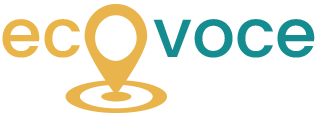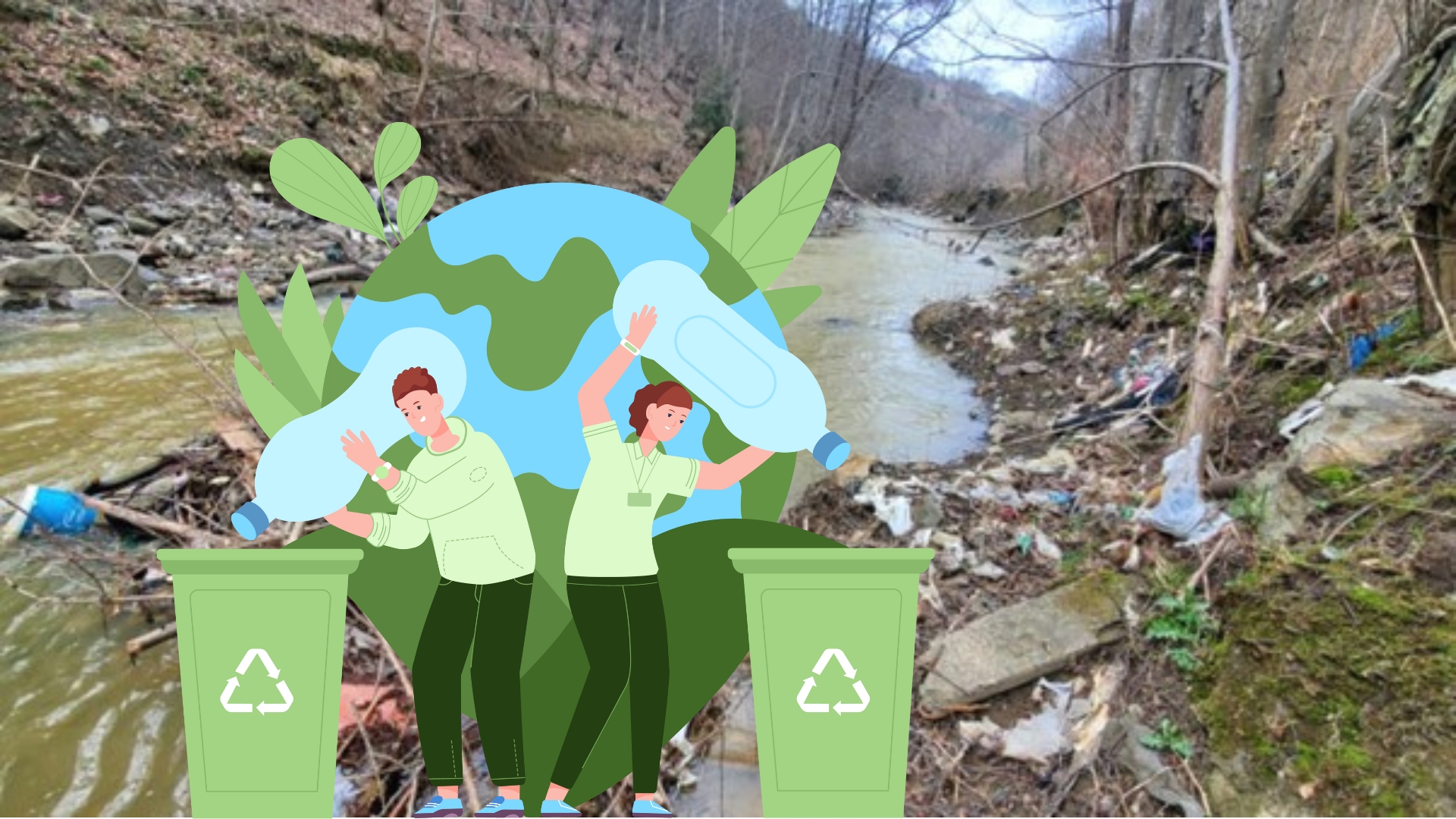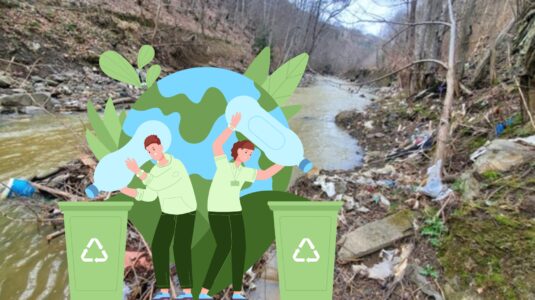The Arieș Valley is one of the most beautiful and picturesque regions in Romania. Known for its spectacular landscapes, mountain trails, and traditional rural communities, this area has unfortunately been increasingly affected in recent years by a growing problem: waste. In this article, we will explore, in addition to the causes and impact of this issue, how local actors can get involved in solving it.
Causes of waste accumulation in the Arieș Valley
For several years now, we have been conducting research projects in the Apuseni Mountains area and have observed a significant accumulation of waste along the banks of the Arieș River and its tributaries over the past decade.
The banks of the Arieș River seen from the bridge at Valea Dobrii
Abrud River, right-side tributary of the Arieș River
Main causes
We tried to understand why these wastes exist, and following the discussions with local authorities and residents, we identified three causes:
1
Inadequate waste collection infrastructure
In many rural areas of Romania, including the Arieș Valley, the waste collection and management infrastructure is limited or nonexistent. The lack of trash bins, recycling centers, and efficient collection services contributes to the uncontrolled disposal of waste in nature. Moreover, from discussions with environmental authorities, we learned that Batch 3 of the Apuseni waste collection services has not yet been tendered because no waste company considers it profitable enough to collect waste from large, sparsely populated areas that are sometimes difficult to access for garbage trucks.
2
Insufficient environmental education
Many residents are not adequately informed about the impact of waste on the environment. Environmental education plays a crucial role in preventing this problem, and the lack of awareness programs creates gaps in understanding the precise consequences of their actions. Although schools organize annual educational and cleanup activities (especially during the Green Week programme) in areas where waste accumulates, these efforts are insufficient, in our opinion, as well as in the opinion of many locals, to bring about noticeable change.
3
Uncontrolled tourism
The Apuseni Mountains are a beautiful area to visit. Unfortunately, not all hikers or guests staying at local guesthouses act responsibly, leaving behind trash and materials that pollute the waters and banks of the Arieș River. Furthermore, some guesthouses do not comply with all environmental protection regulations, trying to avoid costs associated with septic tank emptying, for example.
Why does this matter to us?
The negative impact of waste on the environment and communities
Water pollution
The Arieș River is a vital water source for local communities, agriculture, and wildlife. Uncontrolled waste disposal, mainly plastic and other non-recyclable materials, ends up in rivers and tributaries, affecting water quality and aquatic biodiversity. A recent problem is the presence of textiles, which contribute to water pollution with fibers, besides the unsightly appearance of rags hanging from tree branches. Recent research conducted by colleagues at the Faculty of Physics of Babeș-Bolyai University identified microplastic particles in the Arieș River water, in fish from the river, and in spring water from the Apuseni region. This suggests a link between discarded plastic waste in the water or buried in the soil and the concentrations found in fish, river water, or spring water (Nesterovschi et al., 2023).
Impact on fauna and flora
Waste, particularly microplastics and toxic materials, endangers wildlife, as animals may ingest the waste as food. They can suffer severe injuries or even death. Additionally, local flora is affected by soil pollution, which can hinder plant growth. Researchers from Babeș-Bolyai University, in collaboration with colleagues from other research institutions, have identified several toxic substances harmful to algae and plants, resulting from economic activities and domestic discharges along the river (Halmagyi et al., 2023).
Effects on tourism and the local economy
The Arieș Valley is an increasingly popular tourist destination. However, no matter how many attractions it offers, the image of a polluted and dirty area negatively affects visitors' perceptions. Waste leaves a bad impression, and in the long term, this can lead to a decrease in the number of tourists, which impacts the local economy and the future development of tourism.
Effects on human healt
A large part of the waste in the Arieș River consists of plastic, which, under the influence of natural factors (sunlight, wind, river currents), breaks down into micro- and nanoparticles. Microplastic particles have been found in human blood and placentas, in food, and liquids, including water, beer, and salt. It is also known that some chemicals used in plastic production (phthalates and bisphenol A – BPA) are carcinogenic and can cause neurological diseases, as well as developmental, reproductive, and immune system problems (Mamun et al., 2023). Therefore, as plastic follows its cycle through nature, at least a portion of it ends up back with us.
Furthermore, in the absence of proper waste management infrastructure, some residents resort to another unhealthy method of plastic disposal: burning it. Burning plastic is highly toxic, as it releases persistent organic pollutants (polycyclic aromatic hydrocarbons and dioxins or dioxin-derived compounds) that can cause skin lesions, cancer, immune system issues, birth defects, respiratory problems, neurological disorders, and an increased risk of heart disease.
How to engage in solving the waste problem?
An efficient waste management infrastructure
Infrastructure should be a priority for local authorities, by installing selective collection and recycling points in the villages and towns along the Arieș Valley. This would significantly reduce the amount of garbage that ends up in nature. We were pleased to see the recent occurrence of such collection points in Lupșa, as well as the success of the packaging return point in Câmpeni, part of the Deposit Return System. These are certainly beneficial measures for responsible waste collection.
Environmental education and awareness campaigns
To change the mindset and behaviour of residents and tourists, it is essential to implement environmental education campaigns. Schools, local NGOs, and public administrations should promote environmental protection practices and encourage community participation in cleanup activities.
With the help of the EcoVoce app developed by our team, residents can not only report cases of pollution and waste accumulation but also get information about the risks induced by pollution.

Promoting responsible tourism:
Tourist operators, hotels, and guesthouses in the area can play an important role in educating visitors about their environmental impact. Promoting eco-friendly and responsible tourism would help reduce the waste left by tourists. An example of this is the initiative called Apuseni Treasure Hunt.
Organizarea periodică de acțiuni de curățare
Organizing periodic cleanup actions: Volunteering and cleanup activities organized by local communities, NGOs, or public administrations can help clean areas affected by waste. Such events include Let’s do it, Romania! and the Eco marathon held in July 2023 for six days. However, for the organization and success of such actions, a high level of involvement from local communities is required. Unfortunately, people tend to pass on responsibility, arguing that if others are also not taking initiative, they should not be the ones to make a change. This vicious cycle of collective avoidance keeps the waste problem unresolved.
Mayors, local councillors, priests, teachers, local entrepreneurs, and other influential individuals in the area need to become active leaders in initiating and coordinating cleanup efforts, not just to gain public image or for economic or electoral interests. Through continuous personal example and financial support for these actions, communities could be more motivated to engage more.
Conclusion
Waste in the Arieș Valley is an issue that affects both the natural environment and the local communities and the economy. Solving this problem requires coordinated efforts from local authorities, communities, and tourists. By investing in waste management infrastructure, promoting environmental education, and encouraging responsible tourism, the Arieș Valley can become a clean and attractive area for future generations. This is also the goal of our research team, which has been involved in numerous activities in the area. We hope to see our dream come true and a clean Arieș!
Referințe:
Halmagyi, Adela, Anca Butiuc-Keul, Martin Keul, Cristina Dobrotă, László Fodorpataki, Adela Pintea, Aurel Mocan, Valeria Pop, and Ana Coste 2023. “Impact of Arieş River Contaminants on Algae and Plants.” Toxics 11 (10): 817. https://doi.org/10.3390/toxics11100817.
Mamun, A.Al, et al. 2023. “Microplastics in Human Food Chains: Food Becoming a Threat to Health Safety.” Science of The Total Environment 858:159834. https://doi.org/10.1016/j.scitotenv.2022.159834
Nesterovschi, Ion, Ioana Marica, Erika Andrea Levei, Simion Bogdan Angyus, Marius Kenesz, Oana Teodora Moldovan, and Simona Cîntă Pînzaru. 2023. “Subterranean Transport of Microplastics as Evidenced in Karst Springs and Their Characterization Using Raman Spectroscopy.” Spectrochimica Acta Part A: Molecular and Biomolecular Spectroscopy 298 (October):122811. https://doi.org/10.1016/j.saa.2023.122811.




